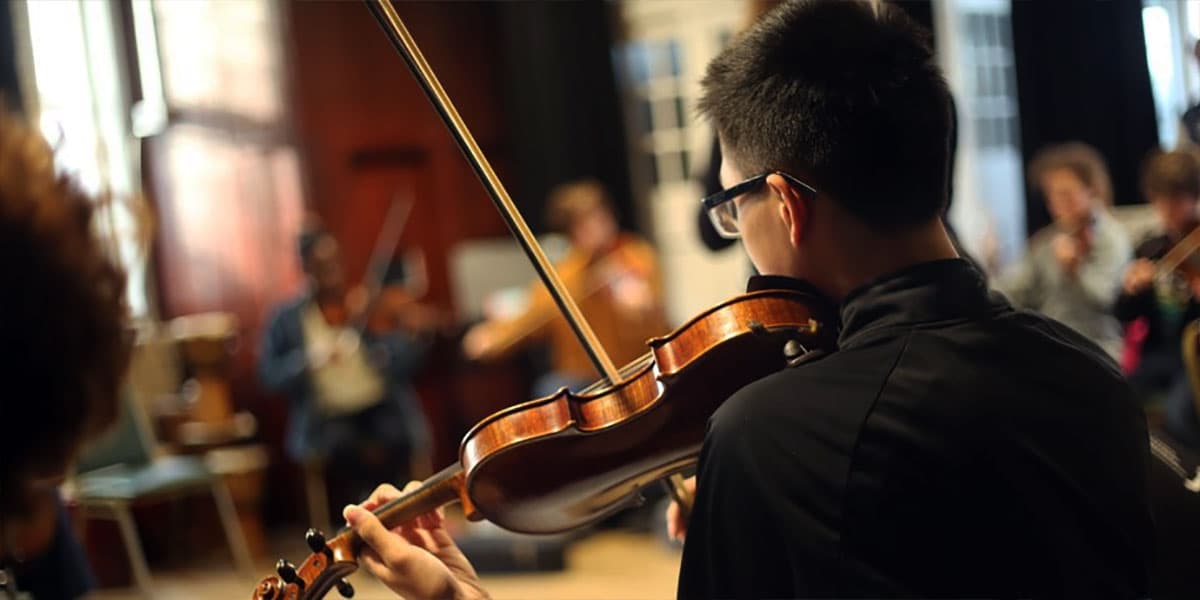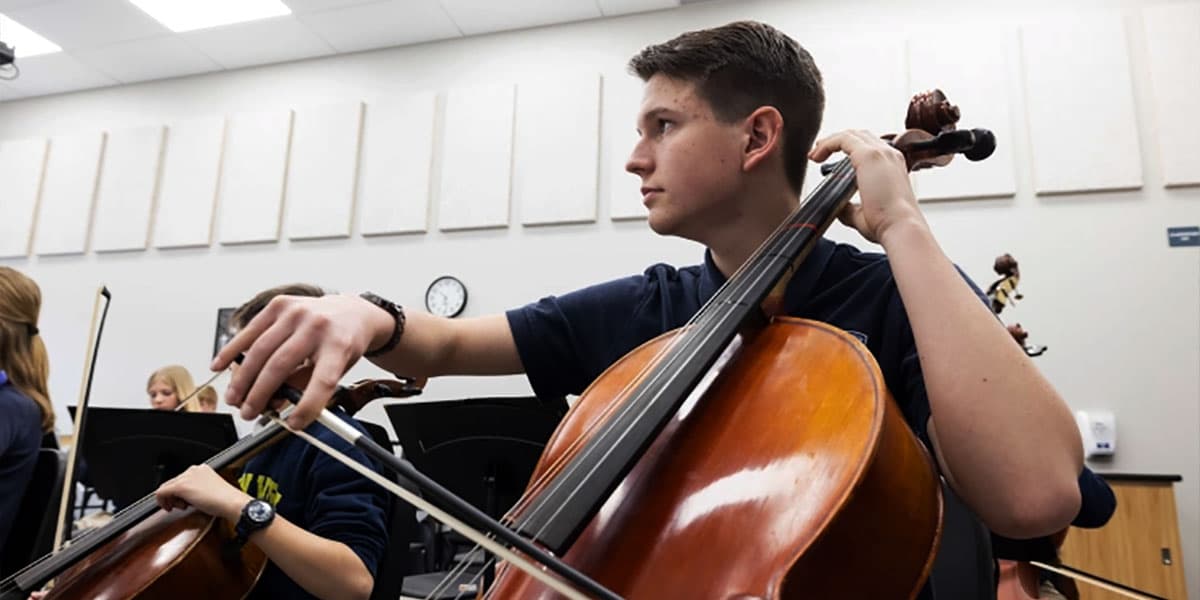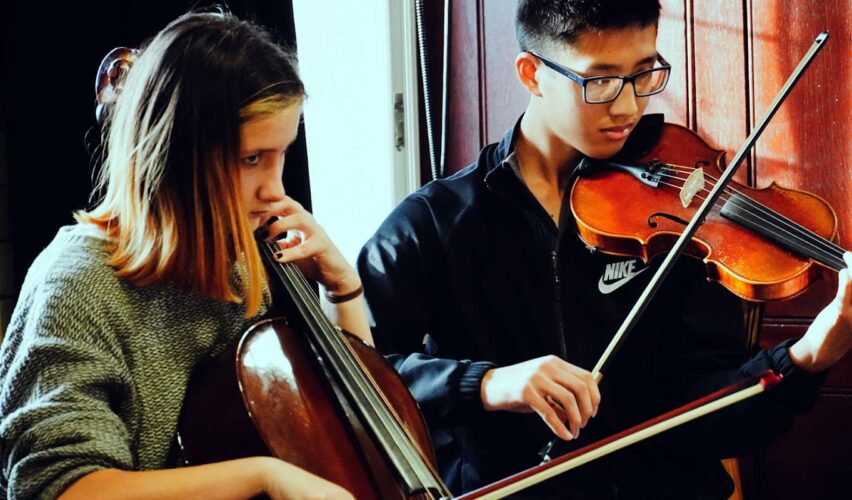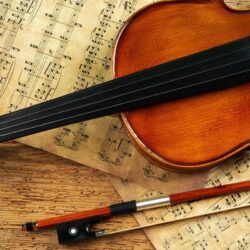Music has long been recognized as an impactful educational tool, especially for young students. In particular, exposing children to classical music in education provides unique benefits ranging from increased focus and memory to improved language skills.
The structured nature of classical music helps develop parts of the brain responsible for concentration, coordination, and visual imagery. Listening to the works of great composers can also inspire creativity and emotional intelligence in students.
In this article, we will explore the advantages of incorporating classical style into elementary curriculum and review research on how classical music in education supports child development. Integrating these timeless masterpieces can profoundly enrich learning.
Benefits of classical music in education
Research shows that classical music uniquely stimulates brain development and boosts key skills for students. Listening to compositions of Mozart and other classical greats is linked to improved focus and memory retention — the structured melodies and harmonies strengthen neural pathways for concentration and recall. In a study of 8,000 students, those exposed to classical music lessons displayed up to 30% higher brain development in areas controlling complex thinking and cognition.
Additionally, passive listening can alleviate stress and anxiety for students in pressure-filled academic settings. Scientists found that ambient classical music lowered blood pressure and heart rates, making a calmer state optimal for studying. Emotionally, classical pieces can convey and foster complex feelings and empathy — skills underlying higher reading comprehension and emotional intelligence, according to child development experts.
Students immersed in Chopin and Beethoven may even display increased creativity through inspired self-expression. Essentially, classical music and brain development share an innate biological connection that can prepare the students’ minds to reach their potential when tapped strategically through education.

Challenges and solutions
While the benefits of classical music education are clear, schools often face logistical challenges in implementation. Tight budgets may leave little room for purchasing instruments or hiring specialist teachers. Moreover, most general classroom educators lack sufficient musical training to integrate the genre adeptly. However, creative partnering and affordable digital tools make the classical music curriculum increasingly accessible.
Through arts initiatives, districts can collaborate with regional orchestras to arrange concerts, demonstrations, and shared music resources at low or subsidized costs. Many musicians are also eager to volunteer time to educate and mentor students.
Schools can apply for grants from philanthropic foundations and music education non-profits to fund sheet music purchases and instruments. Crowdfunding campaigns involving parents and community members may also raise necessary supplies and stipends.
Finally, streaming platforms like Spotify offer pre-compiled classical playlists and activities customizable for any K-12 environment and skill level. With flexible digital assets and community partnerships, schools can overcome resource barriers to share the enriching gift of classical music. The key is getting creative with access to arts – difficult funding climates need not deter exposure to Mozart and melody.
Classroom techniques and activities

Dynamic activities can make integrating music into the curriculum simple and engaging at all grade levels. For elementary students, teachers can play famous works like Vivaldi’s “Four Seasons” and have students draw pictures capturing the emotions evoked or stories implied by the compositions.
Brief kid-friendly biographies of renowned composers like Mozart, Handel, or Debussy inspire interest and connection. Music memory games that task students with recognizing repeated melodic passages train ears, while review games utilize famous symphonies to reinforce academic content through association.
In high school, students can analyze how Bach and other Baroque writers utilize musical techniques like counterpoint and harmony to relay complex ideas.
Comparing opera stories and structures provides lively literature and dialogue studies. No matter the age group or subject material, adding a classical soundtrack enhances lesson retention and creativity through multisensory learning. The universal themes within classical music offer fitting and transformative interdisciplinary learning opportunities.
In addition to passive listening, active music-making builds concentration, teamwork, and fine motor skills.
Elementary students can learn basic recorder or ukulele to perform simplified versions of classical melodies. Playing boomwhackers tuned percussion tubes alongside a piped-in orchestra recording makes for lively math lessons.
Middle schoolers may form bucket drumming troupes or piano ensembles to master the synchronized coordination of musical collaboration. Teachers can incorporate classical rhythms and melodies into physical education activities through dancing or rhythmic movements like clapping.
Digital platforms multiply possibilities for classroom integration. YouTube performances allow full symphony viewing with subtitles displaying composers’ names and song concepts – great for history linkage. Customizable music education apps feature classical games for all ages, testing music memory, emotion matching, historical facts, and more. Students can manipulate the tempo and instrumentation of songs with creative composition apps. Children best retain information when integrated with music, whether listening, moving, or producing.
Classical additions stimulate imagination and retention power across subjects. With a wealth of recordings and interactive media options, affordable tools make implementation simple and sustainable. Creativity is the key to unlocking classical music’s benefits for young academic minds.

